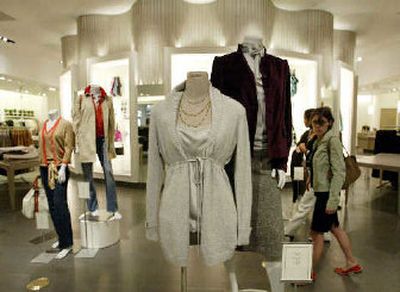Gap offers women an alternative

WEST NYACK, N.Y. — Female baby boomers who grew up in Gap jeans but found themselves sized out of the market in middle age have a new shopping alternative: Forth & Towne, Gap Inc.’s first new store concept in more than a decade.
Gap hopes to woo boomers back with a store that combines the service of a boutique, the broad offerings of a department store — and a more forgiving fit.
Forth & Towne, which aims to be quite different from Gap’s three other brands — Gap, Old Navy and Banana Republic — was opening its first store Wednesday in West Nyack, N.Y., north of New York City. Four more will open in the Chicago area next week.
The company is somewhat behind in reaching out to boomers — its competition is well-established and includes upscale discounter Target Corp. and mall-based specialty chains including Chico FAS Inc. that have their own particular look. So Forth & Towne aims to distinguish itself from its rivals with a variety of fashion statements on a selling floor that’s bigger than the average clothing store.
The new West Nyack store has clusters of merchandise: traditional career clothes like structured suits, more loose-fitting but still dressy designs such as knit tweed pants and matte jersey skirts, casual clothing like corduroy pants and body-hugging fashions such as skinny sweater coats and cropped jackets with fur trims.
The fashions and accessories, including shoes and handbags, are in a price range between those of Gap and Banana Republic stores. Blazers, for example, are priced from $88 to $148.
With the over-35 age group accounting for 39 percent of women’s total apparel expenditures, the market represents a big opportunity for Gap Inc. Gap enjoys about 8 percent of the market share for female shoppers under 35, but less than 3 percent of over-35 customers.